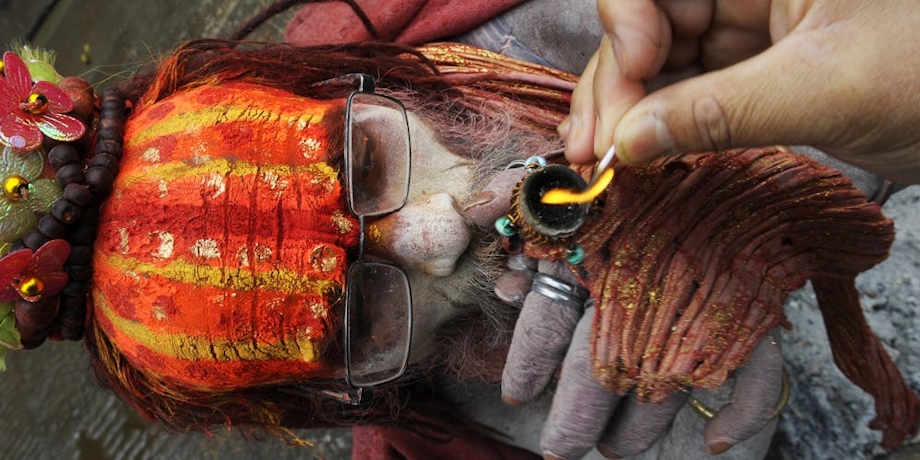
How Hinduism’s cannabis god fuels India’s weed-loving culture
“Normal people need food, we need [ganja],” said one attendee at the holy Hindu festival Maha Shivaratri.
Cannabis has been used for millennia around the world. But perhaps no group in history shares the respect and admiration for the plant that Hindus do. The reason for their reverence is the Hindu deity Shiva. To many Hindus, Shiva is the destroyer of evil, the transformer, and the God of cannabis.
Hinduism, like most religions, blends philosophy, spirituality, and myth together. There are so many different types of Hinduism, that it’s unlikely to find two Hindus with identical beliefs.
The usual estimate of how many Gods are in Hinduism is 330 million. Technically, all of these gods are one part of Brahan—the genderless principal of ultimate reality—as is Shiva. But Shiva holds a special place in the religion separate from most of its other gods.
Typically, Shiva, Vishnu, and Brahman all make the Trimurti, a representation of all the forces that ultimately shape the universe. In Shaivism, a tradition within Hinduism, Shiva is the endless, formless body who other gods ultimately represent. Shiva also, apparently, really enjoys weed.
In some Hindu traditions, Shiva not only smoked weed but survived on it.
Weed has thrived for thousands of years in the regions where Hinduism developed. Hindu stories related to Shiva even talk about the origins of cannabis as something divine.
In one cannabis origin story, long before the creation of the universe, Shiva and other gods churned the great ocean of matter making Amrita, the potion for eternal life. According to the ancient tale, some of the elixir dripped onto the earth and, where it dripped, cannabis plants sprouted from the soil.
Other stories describe Shiva using cannabis to sustain himself as food. And in art that dates back centuries, Shiva is often depicted smoking ganja out of a chillum. In many portrayals, Shiva is seen with half-shut eyes. Some say this is because Shiva is deep in meditation while others attribute it to the obvious effects of weed.

Because of prohibition, Hindus around the world have been forced to forgo ancient marijuana traditions
Most Hindus in the world live in either India or Nepal. In both countries, weed grows naturally. Historically, neither country had any formal laws against marijuana possession or cultivation. It was only in the 70s in Nepal and the 80s in India that local governments made moves to prohibit the deeply symbolic plant.
Today, both countries have confusing stances on marijuana. Since it grows naturally, it’s difficult to prohibit people from using it in religious ceremonies. Some provinces in India have government stores that sell weed products, but not all. Anyone selling or carrying weed can face stiff penalties, but anti-pot laws are rarely enforced. Grams run about $3 in the country. And the reverence for cannabis and its connection to holy parts of life (i.e., festivals and celebrations) is still an integral part of the culture. (It’s for all these reasons that we recently ranked India as one of the best countries for marijuana in the world.)

Every year in February, Hindus from India and Nepal gather in Kathmandu to sing, smoke weed and celebrate Shiva.
Nepal lifts its cannabis ban every year for this festival. Approximately 100,000 Hindus gather near the temple Pashupatinath. It’s stood in Kathmandu for 15 centuries and ranks as one of the holiest shrines to Shiva in the world.
The festival is called Maha Shivaratri, and while not everyone involved smokes cannabis, thousands of people do. Most of the smokers use the same type of chillums that Shiva would have used thousands of years ago. Echoing the tales of Shiva sustaining on cannabis, one festival attendee told a National Geographic film crew: “Normal people need food, we need [ganja].”
Herb Recommended Products:
READ MORE
